
Before turning to the next chapter of James Joyce’s Finnegans Wake, let us quickly review Book I, Chapter 2, popularly known as the Humphriad I. This chapter and the following two form a narrative unit—a trilogy, if you will—that began life as a short sketch or vignette to which Joyce gave the title Here Comes Everybody. As we have seen, this was one of half-a-dozen or so vignettes that Joyce drafted when he took up his pen again several months after the publication of Ulysses. These sketches were the seeds from which Finnegans Wake grew. Here Comes Everybody was the last to be drafted, but it was the one which Joyce began to expand into a full-length novel. Some of the other vignettes, however, were eventually incorporated into the text.
It would not be inappropriate to reprint that initial sketch here as a reminder of just what the Humphriad is all about.
Here Comes Everybody
The earliest draft of “Here Comes Everybody” can be read on the archived version of Jorn Barger’s Robotwisdom website. With the help of David Hayman’s A First-Draft Version of Finnegans Wake (Hayman 62-63) and the James Joyce Digital Archive, I have slightly emended Barger’s version:
Concerning origin of his agnomen the most authentic version has it that like Cincinnatus he was one day at his plough when royalty was announced on the highroad. Forgetful of all but his fealty he hastened out on to the road, holding aloft a long perch atop of which a flowerpot was affixed. On his majesty, who was rather longsighted from early youth, inquiring whether he had been engaged in lobstertrapping Humphrey bluntly answered: ‘No, my liege, I was only a cotching of them bluggy earwigs’. The King upon this smiled heartily and, giving way to that none too genial humour which he had inherited from his great aunt Sophy, turned towards two of his retinue, the lord of Offaly and the mayor of Waterford (the Syndic of Drogheda according to a later version) remarking ‘How our brother of Burgundy would fume did he know that he have this trusty vassal who is a turnpiker who is also an earwicker’. True facts as this legend may be it is certain that from that date all documents initialled by Humphrey bear the sigla H.C.E. and whether he was always Coxon for his cronies and good duke Humphrey for the ragged tiny folk of Lucalizod it was certainly a pleasant turn of the populace which gave him as sense of these initials the nickname ‘Here Comes Everything’. Imposing enough indeed he looked and worthy of that title as he sat on gala nights in the royal booth with wardrobepanelled coat thrown back from a shirt wellnamed a swallowall far outstarching the laundered ladies and marbletopped highboys of the pit. A baser meaning has been read into these letters, the literal sense of which decency can but touch. It has been suggested that he suffered from a vile disease. To such a suggestion the only selfrespecting answer is to affirm that there are certain statements which ought not to be, and one would like to be able to add, ought not to be allowed to be made. Nor have his detractors mended their case by insinuating that he was at one time under the imputation of annoying soldiers in the park. To anyone who knew and loved H- C- E- the suggestion is preposterous. Slander, let it do its worst, has never been able to convict that good and great man of any greater misdemeanour than that of an incautious exposure and partial at that in the presence of certain nursemaids whose testimony is, if not dubious, at any rate slightly divergent.
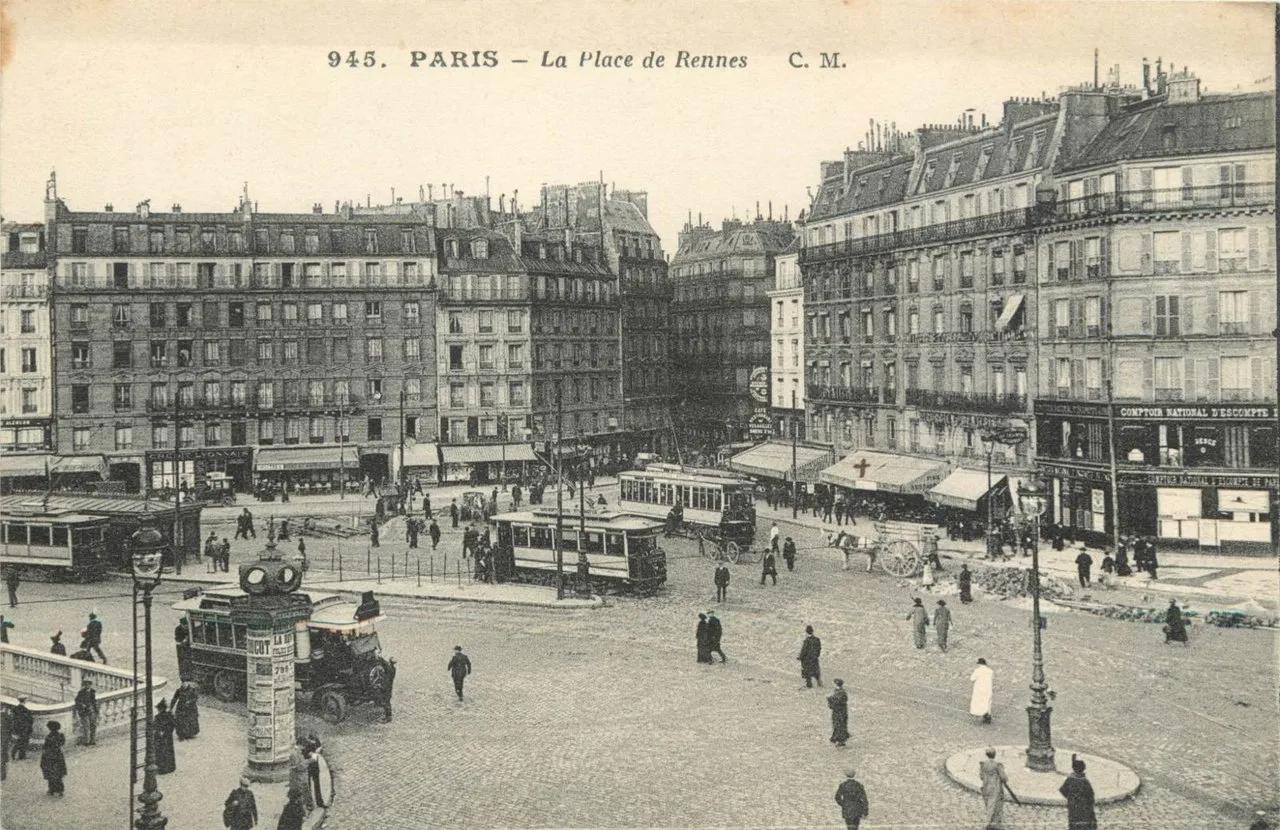
Joyce made this first draft in August 1923 (Crispi & Slote 66). He may even have begun in when he was still on holidays in Bognor, England (29 June-3 August), though the earliest surviving draft is on a sheet of paper marked Restaurant des Trianons. Les Trianons, 5 La Place de Rennes (now La Place du 18-Juin-1940, at the junction of the Boulevard du Montparnasse and the Rue de Rennes), was Joyce’s favourite restaurant in the 1920s. It no longer exists. In a letter dated 23 August 1923, Joyce tells his patron Harriet Shaw Weaver that he has begun drafting other parts in spite of the heat, noise, confusion and suffocation. Joyce had returned to Paris around the 17th of August (Norburn 110).
Before embarking on Work in Progress—as Finnegans Wake came to be known—Joyce expanded and redrafted this sketch. What might be taken as the final draft was published in 2013 by Danis Rose as Chapter IX, Here Comes Everybody, of Finn’s Hotel. Rose’s claim that Finn’s Hotel was the precursor of Finnegans Wake is controversial but won’t be pursued here:
This book is a serio-comic collection of ‘little epics’ that James Joyce wrote in 1923 just before he began to work seriously on the hugely complex enterprise that became Finnegans Wake. Its existence and significance were discovered some decades ago … and its publication thwarted for twenty years. The first edition (2013) is edited and arranged by Danis Rose, introduced by Seamus Deane, illustrated by Casey Sorrow, and designed & printed in letterpress by Michael Caine. (James Joyce Digital Archive)
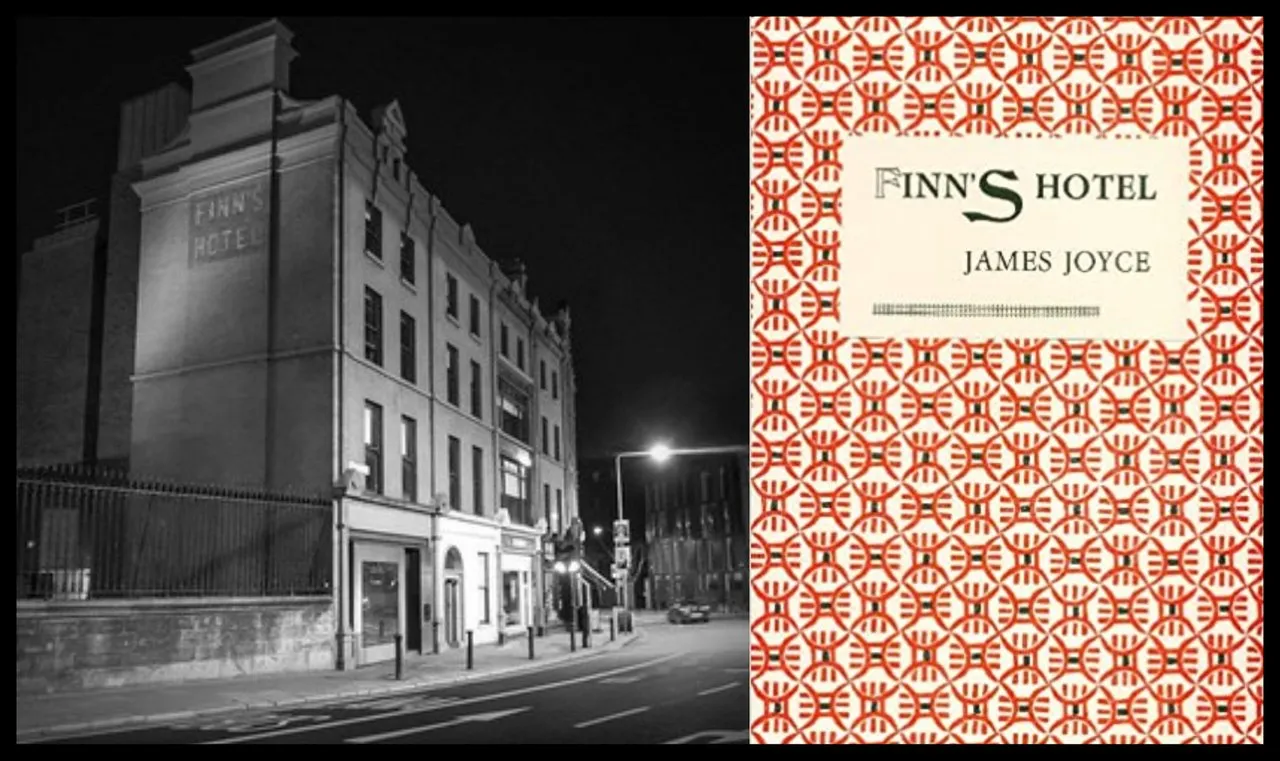
For what it’s worth, here is that final draft of Here Comes Everybody:
CONCERNING THE GENESIS OF HAROLD or Humphrey Coxon’s agnomen and discarding once for all those theories from older sources which would link him back with such pivotal ancestors as the Glues, the Gravys and the Earwickers of Sidham [sic] in the Hundred of Manhood or proclaim him a descendant of vikings who had founded or settled in Herrick or Eric, the best authenticated version has it that it was this way. We are told how it came to pass that, like cabbaging Cincinnatus, the grand old gardener was saving daylight one sabbath afternoon in prefall paradise peace by following his plough for rootles in the rere garden of ye olde marine hotel when royalty was announced by runner to have been pleased to have halted itself on the highroad along which a dogfox had cast. Forgetful of all save his vassal's plain fealty to the ethnarch, Humphrey or Harold stayed not to yoke or saddle but stumbled out hotface as he was (his sweatful bandanna loose from his pocketcoat) to the forecourts of his public in topee, surcingle, plus fours and bulldog boots ruddled with red marl, jingling his turnpike keys and bearing aloft amid the fixed pikes of the hunting party a high perch atop of which a flowerpot was fixed, earthside up. On his majesty, who was, or feigned to be, noticeably longsighted from green youth and had been meaning to inquire what had caused the causeway to be so potholed, asking alternatively, to be put wise as to whether paternoster and silver doctors were not now more fancied bait for lobstertrapping, honest blunt Haromphreyld answered in no uncertain tones very similarly with a fearless forehead: Naw, magersty, aw war jist a cotchin on thon bluggy earwugs. Our sailor king, who was draining a gugglet of obvious water, upon this, ceasing to swallow, smiled most heartily beneath his walrus moustaches and, indulging that none too genial humour which William the Conk on the spindle side had inherited with some shortfingeredness from his greataunt Sophy, turned towards two of his retinue of gallowglasses, Michael, etheling lord of Leix in Offaly, and the jubilee mayor of Drogheda, Elcock, the two scatterguns being Michael M Manning, protosyndic of Waterford, and an Italian excellency named Giubilei according to a later version cited by the learned scholarch Canavan of Canmakenoise, and remarked dilsydulsily:
— Holybones, how our red brother of Pouringrainia would audibly fume did he know that we have for trusty bailiwick a turnpiker who is by turns a pikebailer no less than an earwicker!
Comes the question: are these the facts as recorded in both or either of the collateral andrewpomurphyc narratives? We shall perhaps not so soon see. The great fact remains that after that historic date all holographs so far exhumed initialled by Haromphrey bear the sigla H.C.E. and, while he was only and long and always good duke Umphrey for the hungerlean spalpeens of Lucalizod and Chimbers to his cronies, it was equally certainly a pleasant turn of the populace which gave him as sense of those normative letters the nickname Here Comes Everybody.
An imposing everybody he always indeed looked, constantly the same as himself and magnificently well worthy of such universalisation, every time he continually surveyed from good start to happy finish the truly catholic assemblage gathered together from all quarters to applaud unanimously W. W. Kelly’s company in the play of the millentury A Royal Divorce with ambitious interval band selections from The Bo’ Girl and The Lily on all gala command nights from his viceregal booth where, a veritable Napoleon the Fourth, the father of the people all the time sat, having the entirety of his house about him, with the invariable broadstretched kerchief cooling his whole neck, nape and shoulderblades and in a wardrobepanelled tuxedo completely thrown back from a shirt well entitled a swallowall, in every point far outstarching the laundered clawhammers and marbletopped highboys of the pit stalls and early gallery.
A baser meaning has been read into these characters the literal sense of which decency can safely scarcely hint. It has been blurtingly bruited by certain wisecracks that he suffered from a vile disease. To such a suggestion the one selfrespecting answer is to affirm that there are certain statements which ought not to be and, one should like to be able to add, ought not to be allowed to be made. Nor have his detractors, who, an imperfectly warmblooded race, apparently conceive him as a great white caterpillar capable of any and every enormity in the calendar recorded to the discredit of the Juke and Kellikek families, mended their case by insinuating that, alternatively, he was at one time under the ludicrous imputation of annoying Welsh fusiliers in the park. To anyone who knew and loved the Christlikeness of the big cleanminded giant H. C. Earwicker throughout his long existence, the mere suggestion of him as a lustsleuth nosing for trouble in a boobytrap rings particularly preposterous. Truth compels one to add that there is said to have once been some case of the kind implicating, it is sometimes believed, a quidam who has remained completely anonymous but was, it is stated, posted at Mallon’s at the instance of watch warriors of the vigilance committee and years afterwards seemingly dropped dead whilst waiting for a chop somewhere near Hawkins Street. Slander, let it lie its flattest, has never been able to convict that good and great and no ordinary Southron Earwicker, as a pious author calls him, of any graver impropriety than that, advanced by some woodward or regarder who did not dare deny having that day consumed the soul of the corn, of having behaved in an ungentlemanly manner opposite a pair of dainty maidservants in the greenth of the rushy hollow whither, or so both gown and pinners pleaded, Dame Nature had spontaneously and about the same hour of the eventide sent them both but whose published combinations of testimonies are, where not dubiously pure, visibly divergent on minor points touching the intimate nature of this, a first offence in vert or venison which was admittedly an incautious but, at its widest, a partial exposure with attenuating circumstances of an abnormal Saint Martin’s summer and a ripe occasion to provoke it.
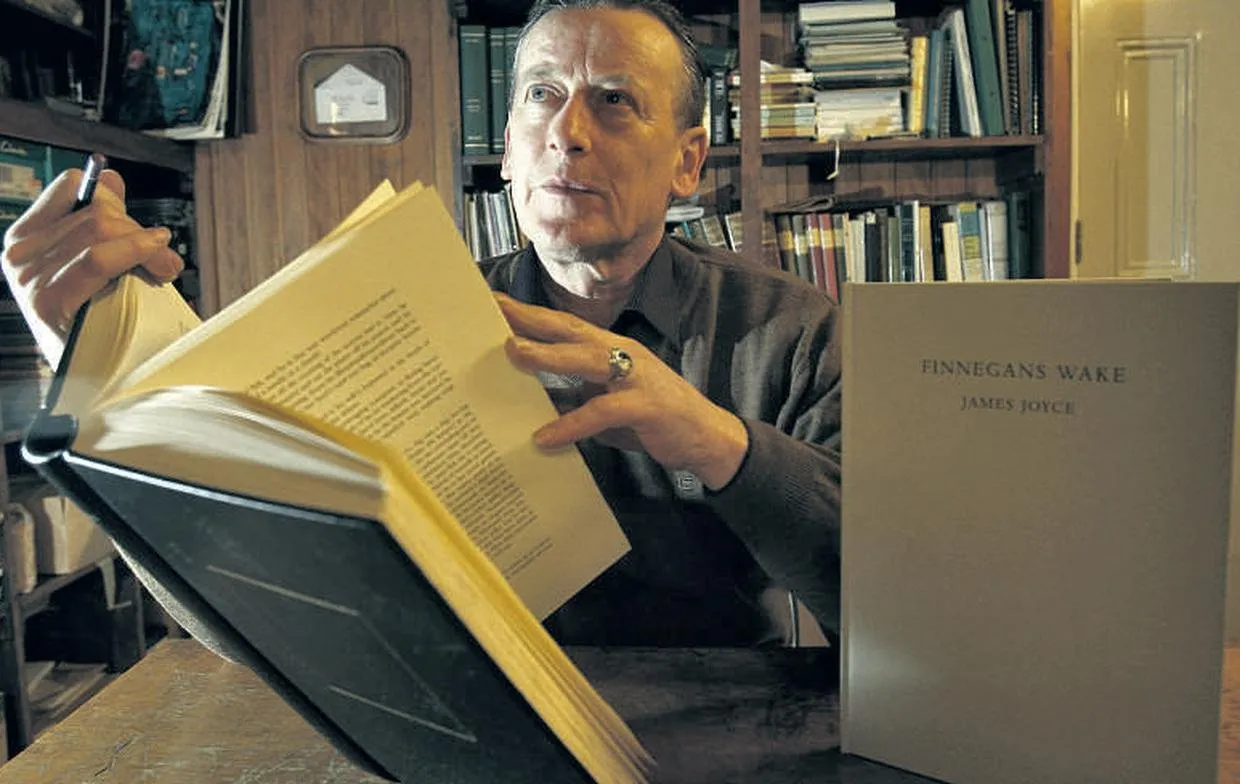
As it stands, this account corresponds to the first four pages of Book I, Chapter 2: RFW 024.01-027.32. It was only after Joyce began to expand the vignette for Work in Progress that he conceived of the subsequent episodes involving the Cad with a Pipe, the Cad’s wife, the overspoiled priest, Treacle Tom, Frisky Shorty, Peter Cloran, O’Mara, and Hosty—not to mention Chapters 3 and 4, which also enlarge upon the tale of HCE, transforming it into a mock-epic saga.
Breaking up the Humphriad
It appears that when Joyce sat down in the latter part of 1923 and began to expand Here Comes Everybody into the beginnings of a novel, it was his original intention that the serio-comic tale of HCE would comprise Chapter 1 of the novel. But things did not turn out as planned:
Chapters 2-4, the first part of the Wake to be drafted, make up a self-contained narrative unit that presents the nature and history of the book’s hero, HCE. It served as the beginning of the Wake until 1926, when Joyce drafted what would become chapter 1. Joyce’s composition of the unit began in August 1923 with the drafting and revising of the “vignette” usually called “Here Comes Everybody,” which was to take its place as the first section of chapter 2 [RFW 024.01–027.32]. Then in the fall and winter of 1923-24 he drafted the rest of chapter 2 and chapters 3 and 4, though the separation into the final chapter units only came later, to meet the requirements of serial publication. (Crispi & Slote 66)
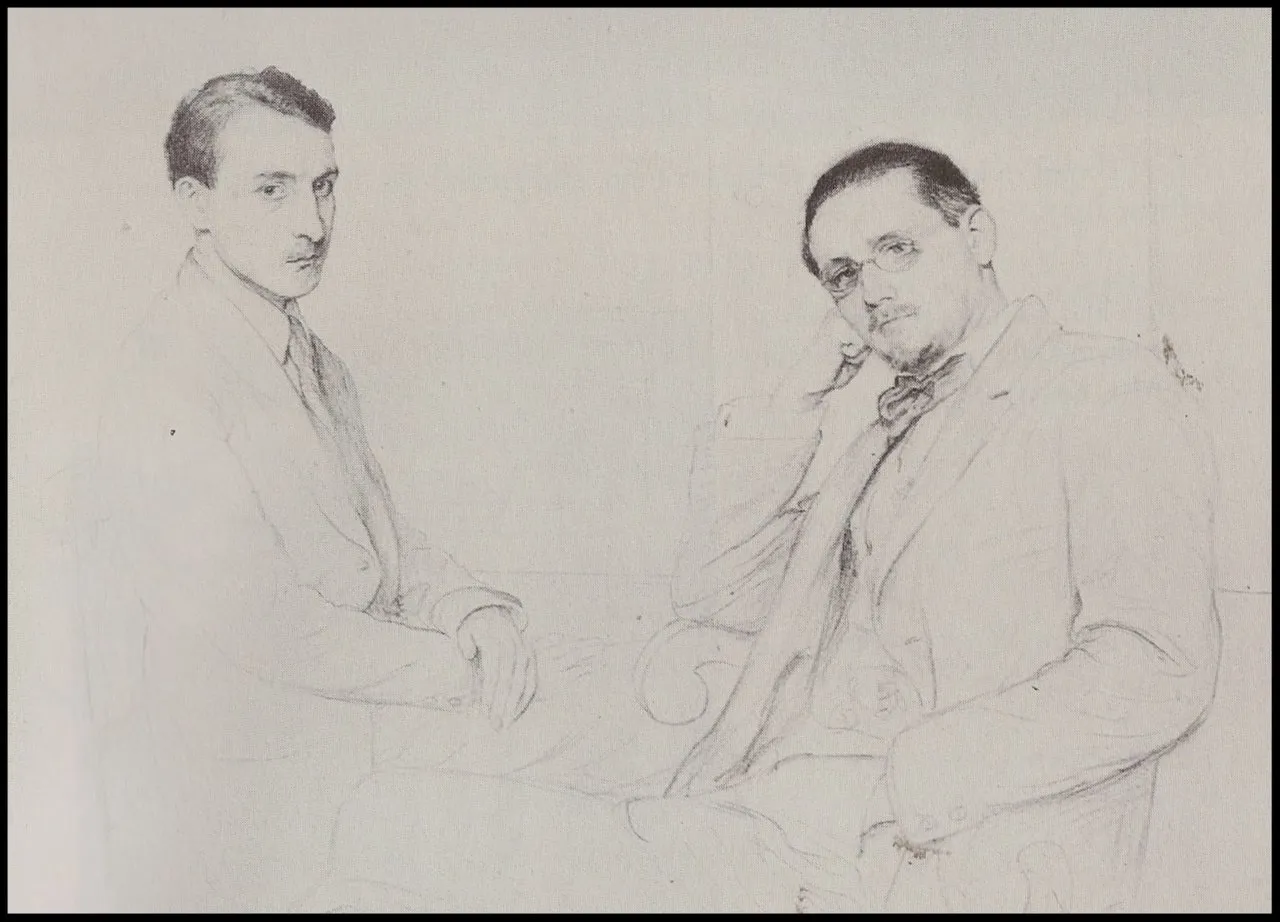
Among Joyce’s coterie of friends and admirers in Paris was the American writer and publisher Robert McAlmon. In 1923 McAlmon founded the Contact Publishing Company to publish his own works and those of some of the most progressive writers of the day. He was anxious to include something new by Joyce in Contact’s growing catalogue of avant-garde fiction. In September 1925, McAlmon brought out the Contact Collection of Contemporary Writers, an anthology of twenty pieces by leading authors of the time. Among these was a short, four-page extract from Here Comes Everybody, corresponding to Chapter IX of Finn’s Hotel. It was entitled From Work in Progress.
This extract is already closer to the final, published version than the Finn’s Hotel version. It was reprinted in December 1925 in an issue of Two Worlds, a literary quarterly created by the controversial American publisher Samuel Roth. In 1927, Roth earned the wrath of Joyce by publishing extracts from Ulysses without the author’s permission. By then Roth had already brought out pirated editions of five fragments of Work in Progress that had been previously published in various other journals. Among these was McAlmon’s From Work in Progress. This time, however, it bore the title A New Unnamed Work.

It was the serialization of Work in Progress in Eugene & Maria Jolas’ experimental journal transition, that finally led to Here Comes Everybody being broken up into three separate chapters.
At the end of 1926 the dramatis personae began to gather for the last period in Joyce’s life. The first of these were Eugene Jolas and his wife Maria. Jolas, born in the United States of Lorraine parents, had spent his childhood in Lorraine, then returned to America at the age of fifteen. His tall, good-looking wife was from Kentucky. Jolas was fluent in English, French, and German, and, like Joyce, was fascinated by words. A sensitive man, he was searching for a theory of art which would also be a philosophy of life; he thought he had found it in a ‛religion of the word,’ the ritual of which he saturated with terms like ‛phantastic,’ ‛mantic,’ and his neologism, ‛paramyth.’ Art alone could be trusted, and trusted only if it abjured externality in the name of imagination. It was a time to be revolutionary, and Jolas centered his revolution in language ...
He and his wife decided they must have a review; they had once, while living in New Orleans, considered taking over the Double Dealer, but, back in Europe, they founded transition, an altogether new one. Subtitling it ‛An International Quarterly for Creative Experiment,’ they intended to publish, if they could get it (as they quickly did), the latest and most experimental work of Joyce, Stein, and young writers.
Jolas was slightly acquainted with Joyce, but approached him through Sylvia Beach. As a result, on a Sunday afternoon, December 12, 1926, Joyce invited the Jolases, Elliot Paul (transition’s associate editor), and of course Sylvia Beach and Adrienne Monnier to hear him read the first section of Finnegans Wake. A smile occasionally passed over his face as he read. ‛What do you think of it? Did you like it?’ he asked them eagerly when he had finished. It was not easy to reply. Soon afterwards Joyce lent Jolas the first hundred and twenty pages, which he said contained the outline of the whole book. ‛I imagine I’ll have about eleven readers,’ he said, with a kind of self-protective humility. Jolas found in Finnegans Wake the principal text for his revolution of the word. The mixture of childish nonsense and ancient wisdom had been prepared for by the Dadaists and surrealists, while the overriding sense of form in Joyce’s book distinguished it from their productions. It was decided that the Jolases would publish the book serially in transition, beginning with the beginning of the book, and including in revised form the fragments published at random during the last several years. They continued steadily from April 1927 through November 1927; then publication was a little more sporadic, and after November 1929, for reasons that will appear, there was a long interval. Joyce was highly content to have this outlet for his work, and transition also published essays about him so that it was a continuing advocacy. (Ellmann 587-589)
The three fragments that became Book I, Chapters 2-4—the Humphriad—were published under the title Continuation of a Work in Progress in the summer of 1927:
| Chapter | FW | RFW | Issue | Date |
|---|---|---|---|---|
| I.2 | 030-047 | 024-038 | transition 2 | May 1927 |
| I.3 | 048-074 | 039-059 | transition 3 | June 1927 |
| I.4 | 075-103 | 060-082 | transition 4 | July 1927 |
Between August and December 1923, Joyce drafted the whole of the Humphriad. He then proceeded to draft in succession what would eventually become Chapters I.5, I.7, I.8, III.1, III.2, III.3, III.4, and I.1. The latter, Riverrun, was completed in November 1926, shortly before Joyce read the first part of Work in Progress to his coterie of admirers in Paris. In the spring of 1927, Joyce prepared Riverrun and the Humphriad for serial publication in transition. It was at this point that the saga of HCE was broken into a trilogy of chapters, as Bill Cadbury, Professor Emeritus of English at the University of Oregon, describes in How Joyce Wrote Finnegans Wake:
In the spring of 1927 in the fair copy of the first typescript all the sections had been drafted and their sequence established. It only remained for Joyce to determine their final segmentation into episodes for publication in transition and to make changes that would organize their proper symmetries and echoes. (Crispi & Slote 87)

This segmentation was not Joyce’s original intention. When, for example, he wrote, ’Sdense! Therewith was released a poisoning volume of cloud indeed, as a comment on Hosty’s Rann, he did not envisage that these words would open a new chapter of Work in Progress. Eugene Jolas’s intervention, then, had a decisive impact on the ultimate shape of Finnegans Wake. The characteristic pattern by which Giambattista Vico’s cycle of history was transformed into a tetralogy of ages—squaring the circle—required a fourfold structure. In order to construct this literary edifice, Joyce added an introductory chapter to the novel, which made a tetralogy with the three parts of the Humphriad. He also inserted a new chapter—I.6, The Quiz—to complete the second tetralogy. And he conceived of a new tetralogy—Book II—to insert between Books I and III so that the novel as a whole would have precisely four books. (How Book IV fits into this elaborate scheme and why it is not comprised of four chapters are questions for another day.)
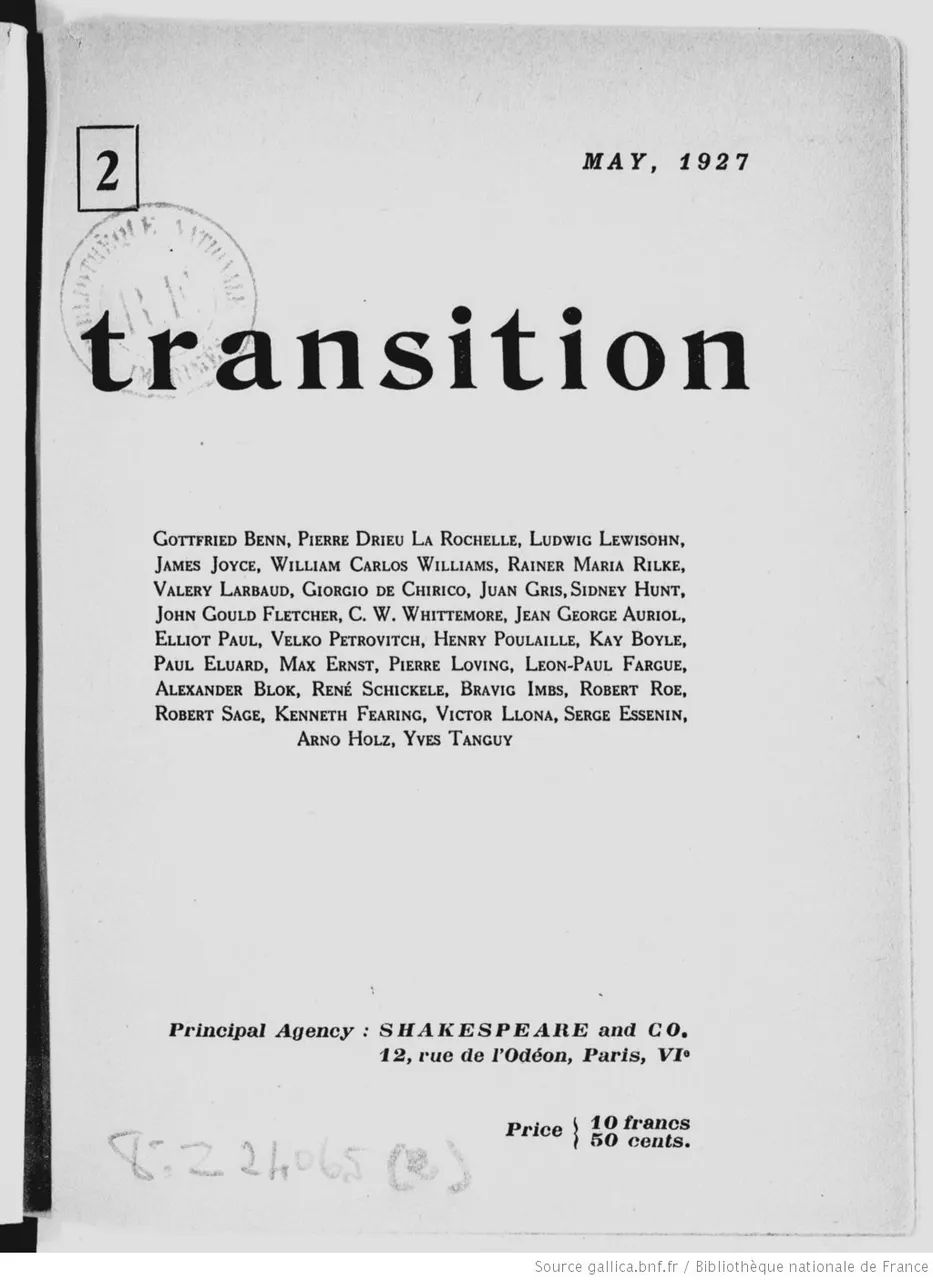
And that’s a good place to stop.
References
- Luca Crispi & Sam Slote (editors), How Joyce Wrote Finnegans Wake: A Chapter-by-Chapter Genetic Guide, The University of Wisconsin Press, Madison, WI (2007)
- Richard Ellmann, James Joyce, Second Edition, Oxford University Press, Oxford (1982)
- David Hayman, A First-Draft Version of Finnegans Wake, University of Texas Press, Austin, TX (1963)
- James Joyce, Finnegans Wake, The Viking Press, New York (1958, 1966)
- James Joyce et al, The Letters of James Joyce, Volume I, Stuart Gilbert (editor), Volumes II and III, Richard Ellmann (editor), Viking Press, New York (1957, 1966)
- James Joyce, James Joyce: The Complete Works, Pynch (editor), Online (2013)
- Robert McAlmon (editor), Contact Collection of Contemporary Writers, Contact Editions, Paris (1925)
- Roger Norburn, A James Joyce Chronology, Palgrave Macmillan, London (2004)
- Danis Rose, John O’Hanlon, The Restored Finnegans Wake, Penguin Classics, London (2012)
- Giambattista Vico, Goddard Bergin (translator), Max Harold Fisch (translator), The New Science of Giambattista Vico, Cornell University Press, Ithaca NY (1948)
Image Credits
- Humphriad: © 2010 Stephen Crowe, Adapted, Fair Use
- La Place de Rennes, Paris: Charles Maindron (photographer), Public Domain
- Finn’s Hotel: © Dublin Whiskey Tours, Fair Use
- Finn’s Hotel: Michael Caine (designer), © Ithys Press, Fair Use
- Danis Rose: © Independent.ie, Fair Use
- Robert McAlmon and James Joyce in 1924: Paul-Émile Bécat (artist), Princeton University Library, Fair Use
- Samuel Roth: © Columbia University Libraries, Rare Book and Manuscript Library, Fair Use
- James Joyce and Eugene Jolas in 1936: Copyright Unknown, Fair Use
- Cover of transition 2: Eugene Jolas, transition, Issue 2, May 1927, Bibliothèque nationale de France, Public Domain
Useful Resources
- Joyce Tools
- FWEET
- The James Joyce Scholars’ Collection
- FinnegansWiki
- James Joyce Digital Archive
- Annotated Finnegans Wake (with Wakepedia)
- From Swerve of Shore to Bend of Bay
- Wake in Progress
- John Gordon’s Finnegans Wake Blog

